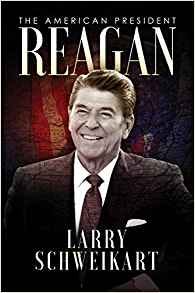No one wanted the American middle class to thrive more than Ronald Reagan. He saved the economy from Jimmy (“Jesus”) Carter and extremely high inflation. His tax cuts brought a booming economy and an explosion of jobs.
At the time, Reagan had not seen the full hollowing out of U.S. cities. Much of what had started to happen to Detroit, Akron, Toledo, and other cities had only really started in the 1970s. To many, including sociologists such as Charles Murray and pop economist George Gilder, much of this decline was due to Great Society welfare policies and would naturally straighten out if those policies were fixed. But it was also clear at that time that the auto industry was in trouble, but there were multiple explanations for that, and blame was to be shared all around.
Managers who came from the financial side of companies—-as opposed to the production side—-were clueless about how to make good products. They were versed in profits and cutting costs, not in retaining customers. Since 1960, Detroit, with virtually no foreign competition in autos, had willingly agreed to pay the unions whatever they wanted rather than risk a strike. As a result, at the very time that the designs and technology were becoming stagnant, prices were going up. Unions played a part by their constant demands for wage increases and better benefits. Then there was government, which from 1970 on began to heap new regulations and costs from the Consumer Product Safety Commission, the Environmental Protection Agency, and other regulatory bodies, virtually tripling the price of many manufactured products.
Companies moved production overseas in the case of textiles and electronics. In the case of steel and auto, they downsized, but to no avail. Reagan found himself giving Chrysler a bailout.
Understand, however, that Reagan had come of age politically when the “Golden Accident” was in place. For nearly 20 years after World War II, the United States was the world’s #1 producer and consumer—-something that has never happened in human history. With captive consumers, American industries got lazy and uncompetitive. Few were concerned because during Reagan’s presidency, the primary competitor was Japan.
The Japanese relied on old-fashioned “industrial policy” to ensure the government backed big exporters through MITI (the Ministry of International Trade and Industry). Having come from the New Deal, Reagan wanted nothing to do with government “picking winners and losers” in the market. So he was hesitant to put tariffs on Japanese cars, electronics, textiles, or computers.
Briefly it seemed he might be right. Within a decade after he left the presidency, Japan began to sink under the weight of its government-controlled industries. More important, Japan found that, like America before it, manufacturing things in Japan was too expensive. Japan also began to “off shore.”
Had Reagan lived to see the “pitter patter of little feet” across the Rio Grande for American plants built in Mexico, and to see the further decline of American autos and steel under the North American Free Trade Agreement (NAFTA) he may well have changed his mind on tariffs. But he had been steeped in George Gilder, and had seen first hand the near-miracle of Maggie Thatcher’s supply-side rebirth of Britain.
At the time, China was a distant5 threat. There was no slave labor turning out products at 10% the cost of American-made. And unlike Japan, China’s goal was not merely to revive its economy through exports, but to conquer the world through its cheap-labor policies and its industrial espionage.
Reagan’s weakness was that he came too early in the industrial wars to appreciate the new threat on the horizon after he had defeated one major enemy, the Soviet Union. But it’s inconceivable that anyone who loved the American working man as much as Dutch did would have stood by and allowed the majority of American manufacturing to die.
https://www.wildworldofhistory.com/offers/9qFBdu2r
Larry Schweikart (@LarrySchwe94560)
Rock drummer, Film maker,NYTimes #1 bestselling author
Link for Patriot’s History Vimeo
Link to buy larry a coffee
http://buymeacoffee.com/larrys




